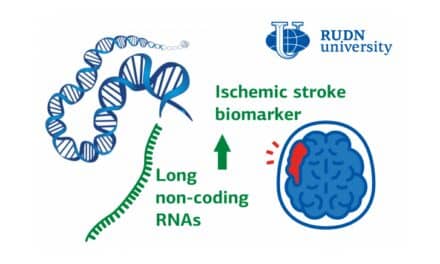Research from Florida International University’s College of Business (FIU Business) found that a machine learning (ML) algorithm that uses hospital data and social determinants of health data can help diagnose a stroke quickly—before the results of laboratory tests or diagnostic images are available—with 83% accuracy.
The findings suggest that there may be a way to reduce stroke misdiagnosis in patients and enhance patient monitoring. The discovery will allow medical personnel to identify a stroke patient or patients at risk of a stroke sooner, improving the patients’ medical outcome.
Improving Stroke Diagnoses
Stroke is among the most common and dangerous misdiagnosed medical conditions, and timely detection is key to effective management. Patients who are treated within an hour of the onset of symptoms have a greater chance of surviving and avoiding long-term brain damage. Data indicates that Blacks, Hispanics, women, older adults on Medicare and residents of rural areas are less likely to be diagnosed during this crucial window. Currently used pre-hospital stroke scales miss approximately 30% of cases.
The ML algorithm that helps better diagnose strokes was developed using data of suspected stroke patients such as age, race, and number of underlying conditions. Social determinants of health (SDoH) are non-medical factors, such as race, income, and housing stability, that affect a wide range of health outcomes.
“As we add more data it’s learning data,” says Min Chen, associate professor of information systems and business analytics at FIU Business and one of the researchers. “Our algorithm can incorporate a lot of variables to analyze and interpret complex patterns, which will allow emergency department care teams to make better and faster decisions.”
Study Details
Published in the Journal of Medical Internet Research, the study outlines how researchers developed the ML stroke prediction algorithm using the emergency department and hospitalization records from hospitals in the state of Florida from 2012 to 2014, merged with SDoH data from the American Community Survey.
Their analysis included 143,203 hospital visits of unique patients. Patients who ended up being diagnosed with stroke tended to be older, have more chronic conditions, and have Medicare as the primary payer.
If a hospital is using the researchers’ ML algorithm, when a patient arrives with stroke or stroke-like symptoms, an automated, computer-assisted screening tool will quickly analyze all the patient’s information. If it predicts that the patient is at a high risk for stroke, a pop-up will be triggered to alert the emergency department team.
Current ML methods have focused on interpreting clinical notes and diagnostic imaging results, which may not be available when a patient arrives at a hospital, particularly in rural and underserved communities.
This type of technology is undergoing pilot testing in the ERs of several prominent healthcare systems.
Chen conducted the study with Professors Xuan Tan of Clara University and Rema Padman of Carnegie Mellon University.





